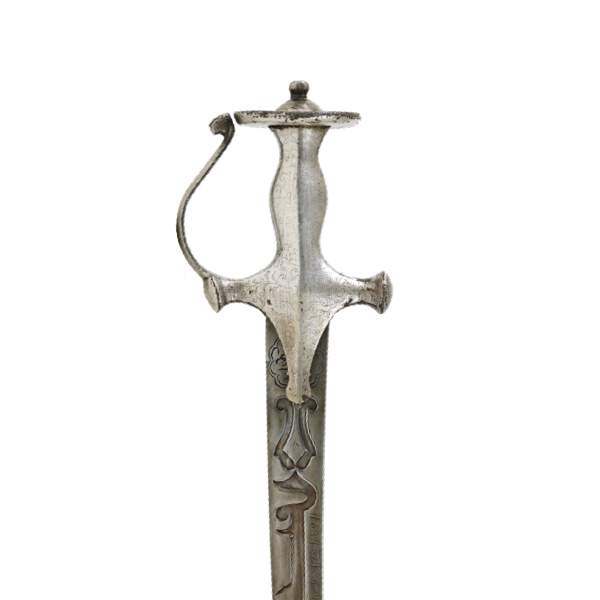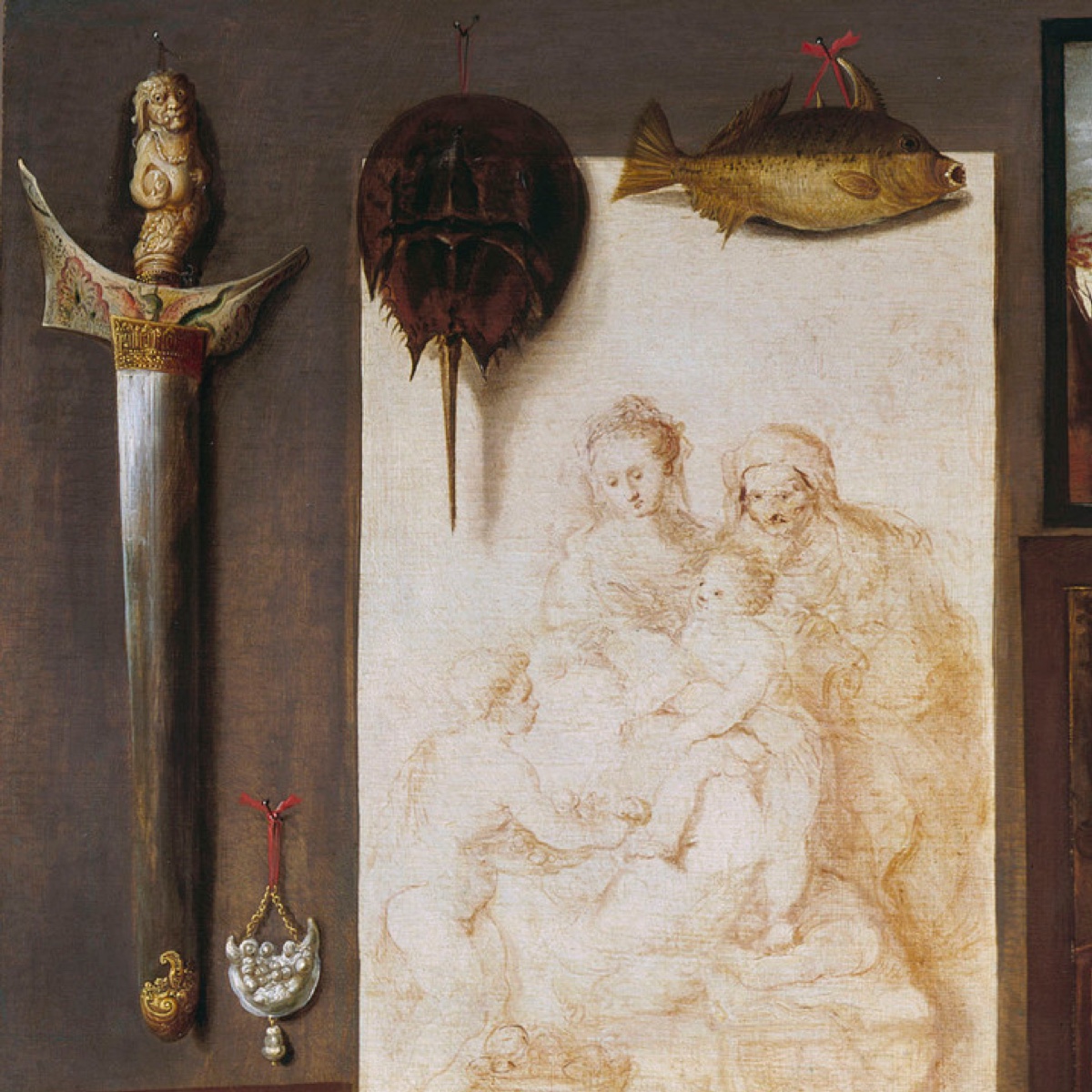
Asian arms in Dutch master paintings
Dutch masters' fascination with exotic Asian wares shown in a series of paintings.
Türkenbeute flintlock musket
Fine German hunting flintlock with captured Ottoman barrel.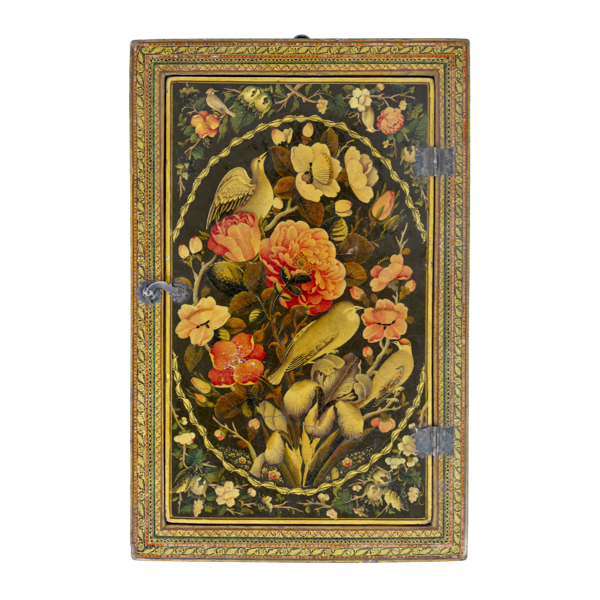
Persian mirror case by Riza Al-Imami
Made of pasteboard, finely lacquered with roses and nightengales.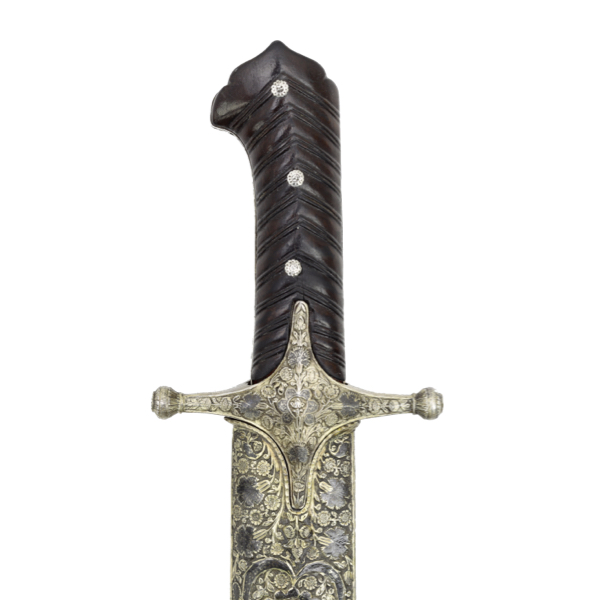
Fine early Ottoman karabela
A fine, early example dating from around 1700 with silver gilt niello mounts.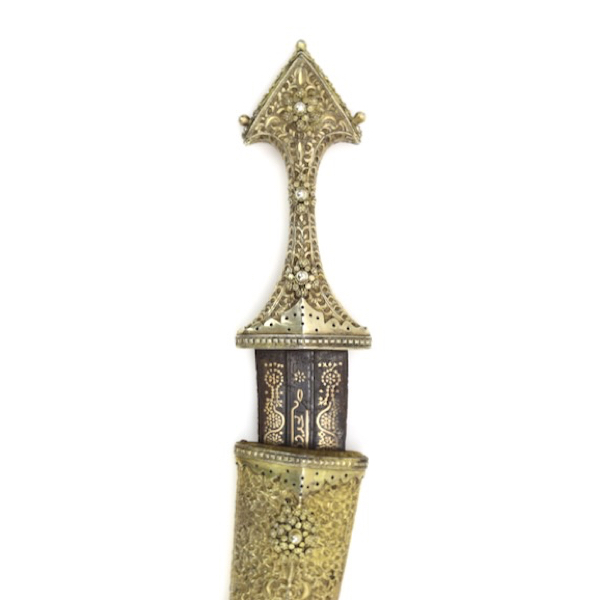
Gilt Ottoman made sabiki
The long version of the jambiya, with blackened, gold inlaid blade.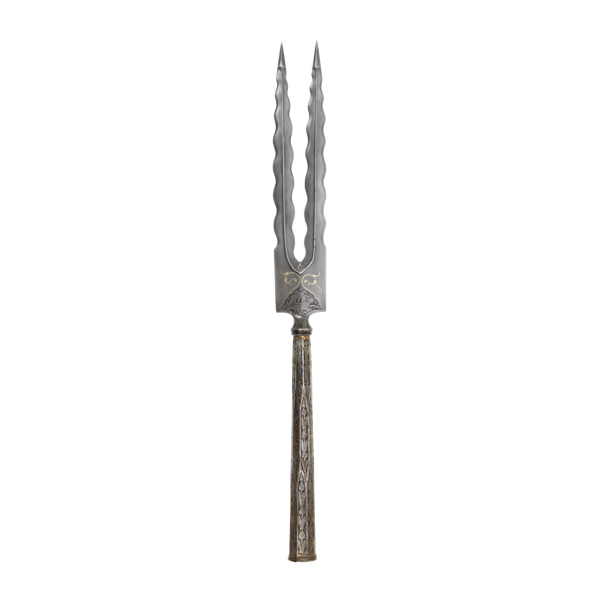
Persian wootz double spearhead
Finely crafted wootz blade, and golden inlays at the base.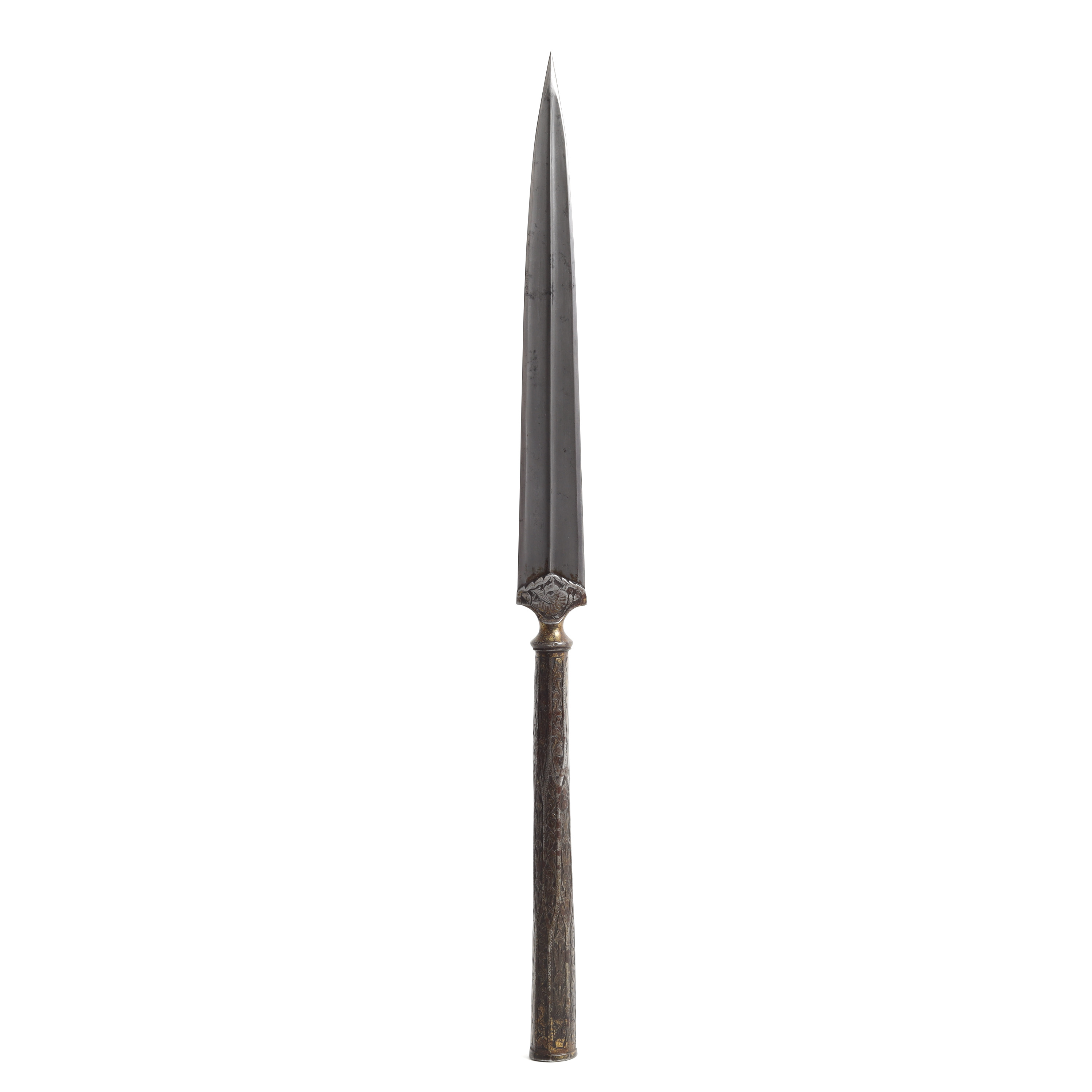
Neyze (نیزه )
Persian word for spear/lance.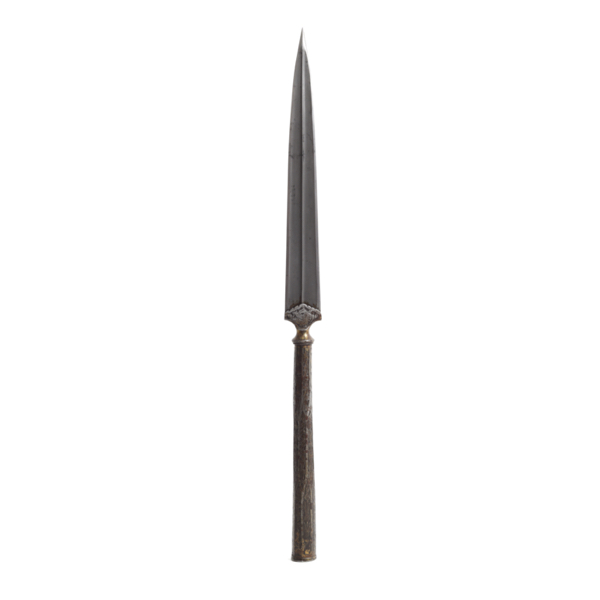
Persian wootz spearhead
Made using Persian wootz. Pronounced features, chiseled socket.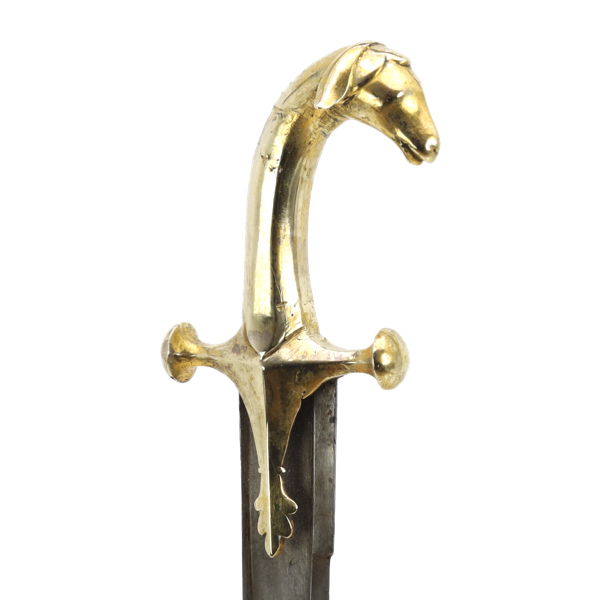
Goat hilted Khyber sword
With gold plated hilt and pattern welded blade.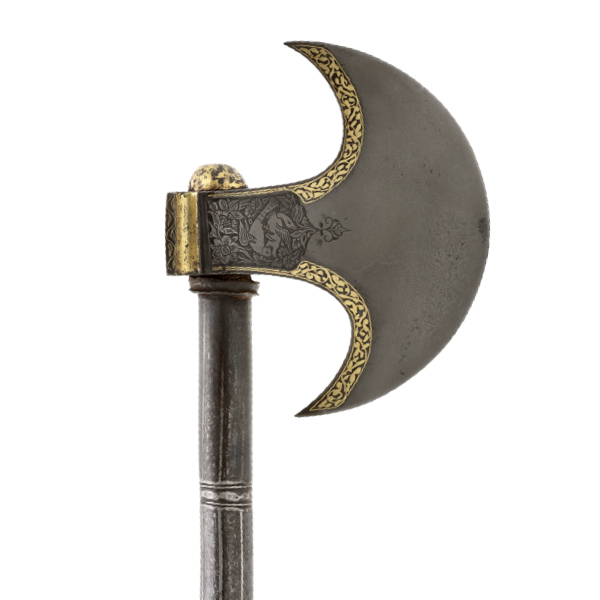
Persian wootz axe
With fine chiseled decoration and largely intact koftgari.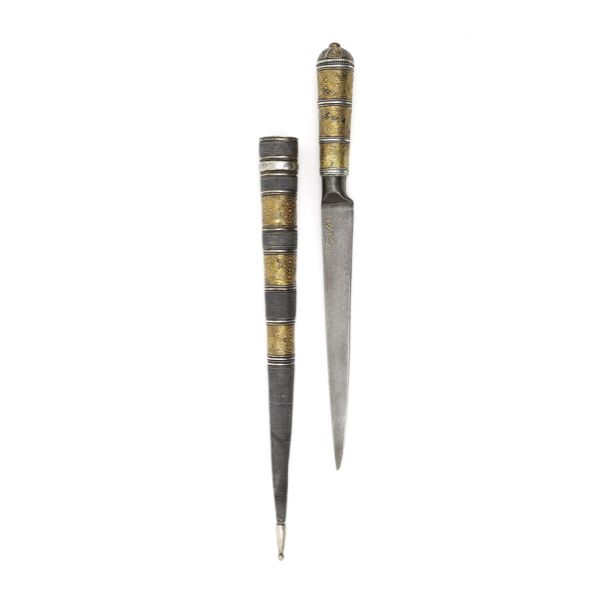
Central Asian dated kard 1709
With wootz blade inlaid in gold with the name of the maker and the owner.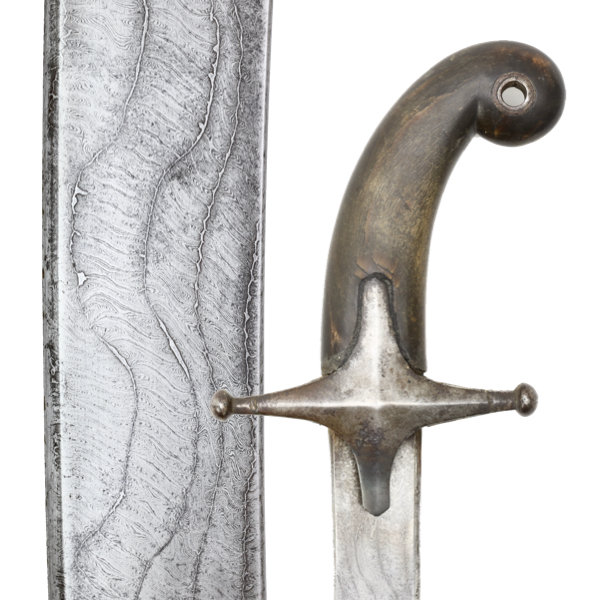
Ottoman Turkish ribbon sword
A remarkable example of bladesmithing with a 5 row twist-core pattern that meanders over the blade.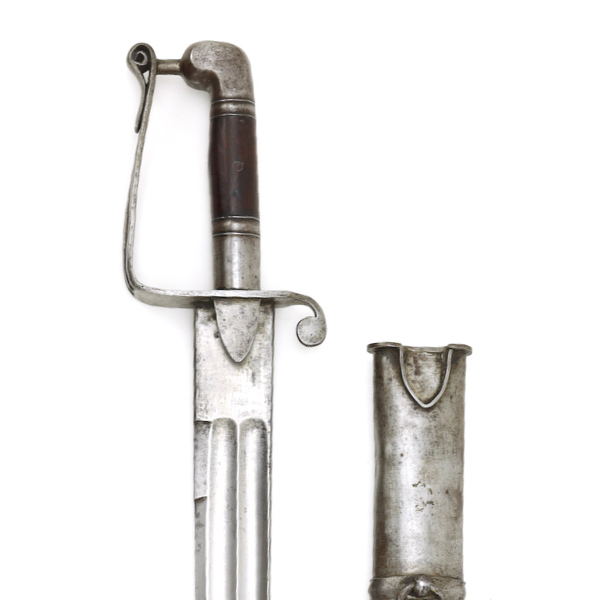
Afghan military saber
With an armory stamp dated Hijri 1326, corresponding to about 1908.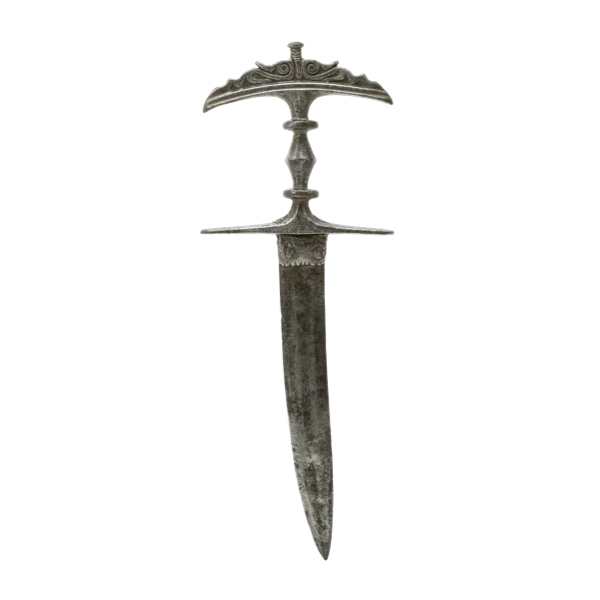
Jamdhar kátári
Hindu term for an archaic form of dagger.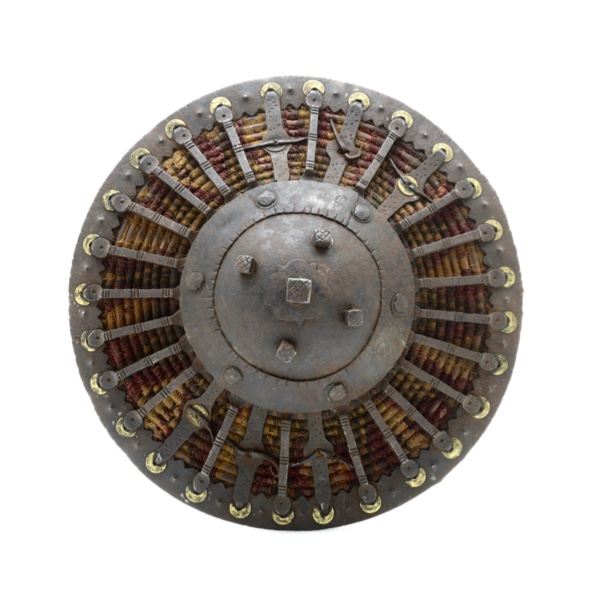
Ottoman Kurdish kalkan
A small, heavily reinforced buckler as used by Ottoman Kurdish infantry.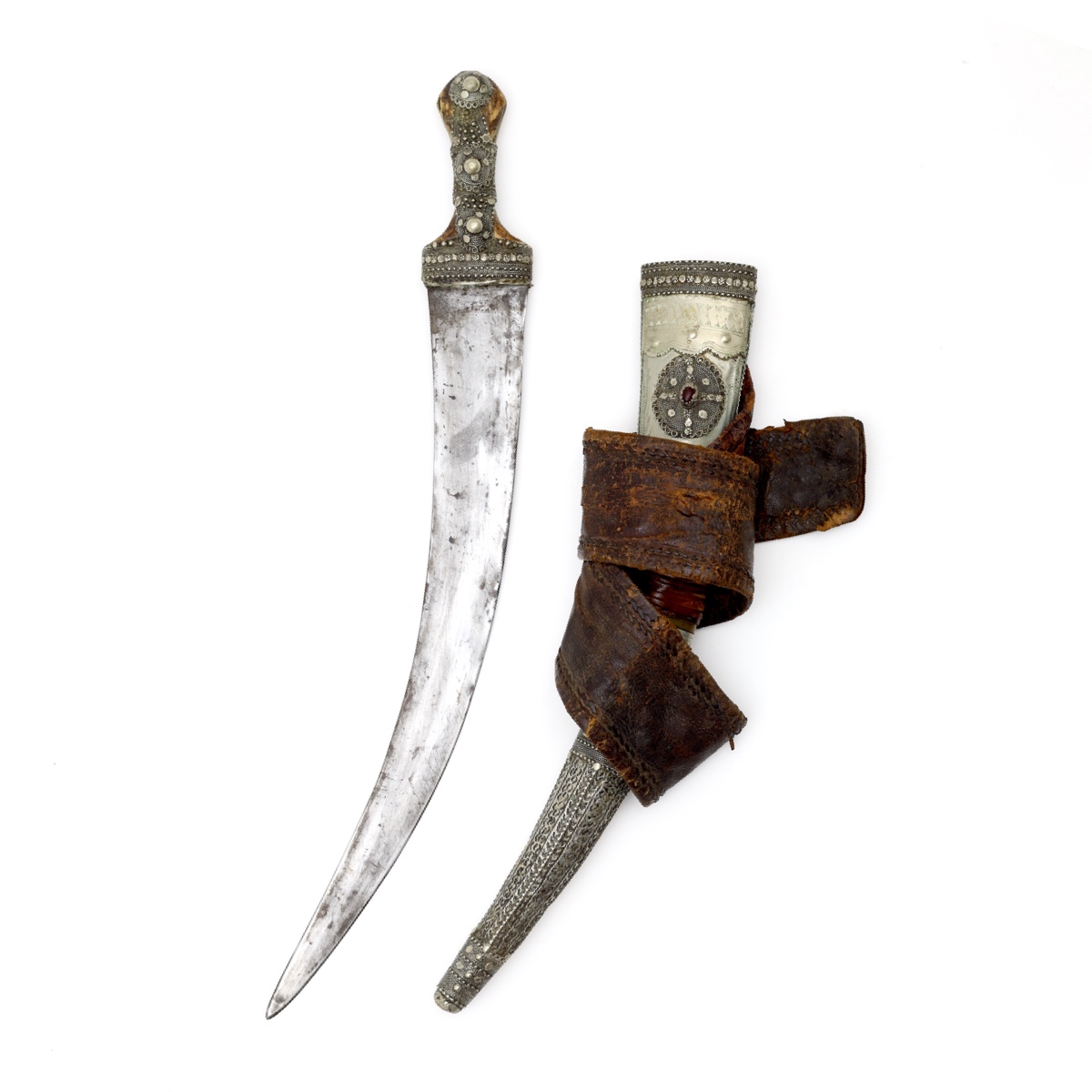
Sabiki or "Wahhabite jambiya"
With a long, sword-like blade characteristic of this type. With original belt.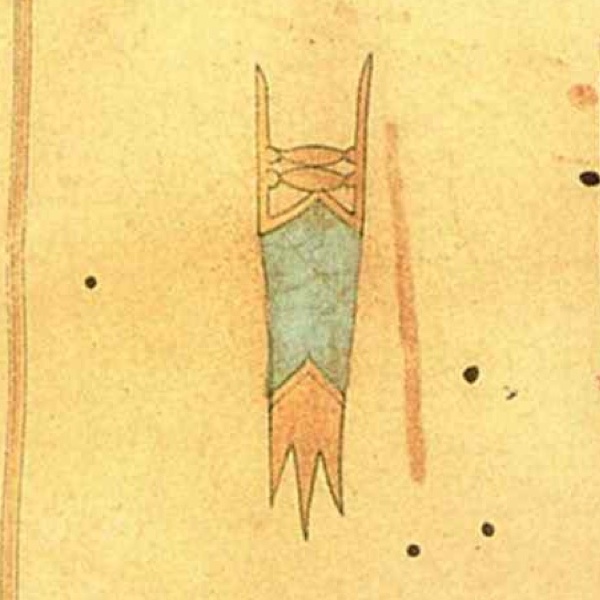
Jamdhar sehlicaneh
A triple-pointed push dagger.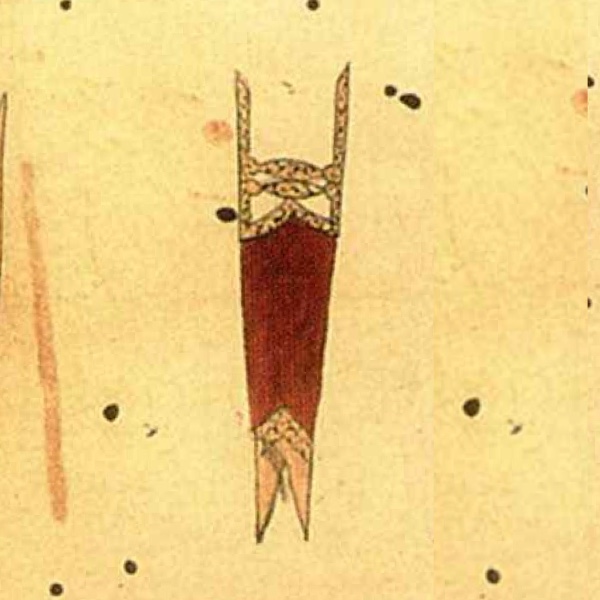
Jamdhar doulicaneh
A double-pointed push dagger.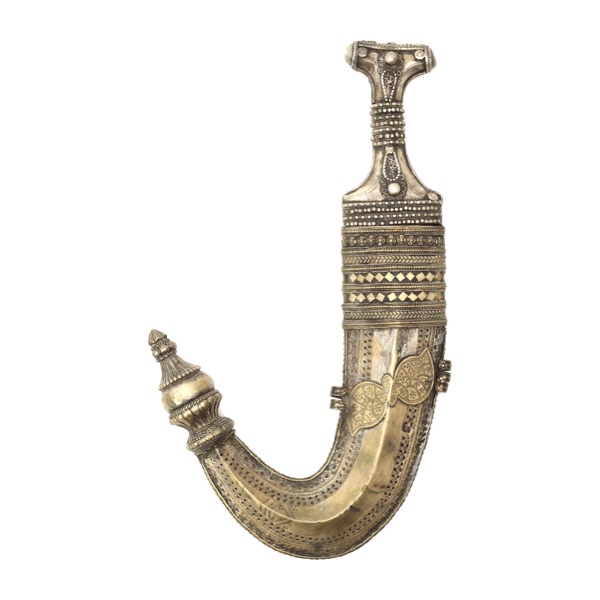
A "Mecca" Jambiya
A style of dagger often associated with the pilgrimage to Mecca.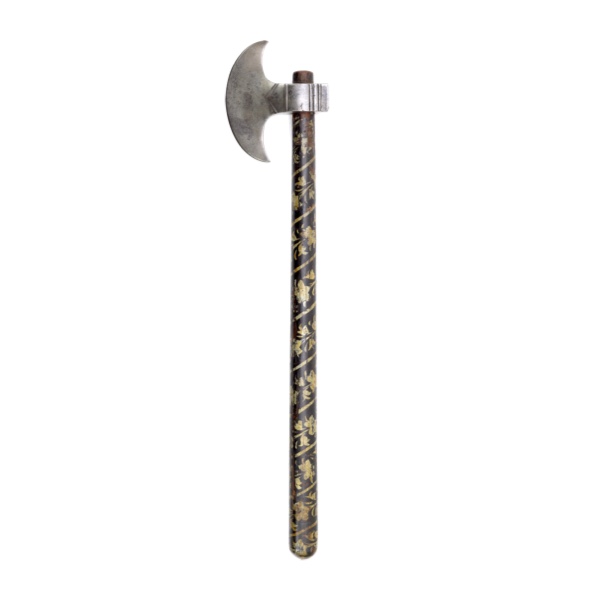
A Persian crescent axe
With lacquered shaft. Previously sold at Sotheby's in 1985.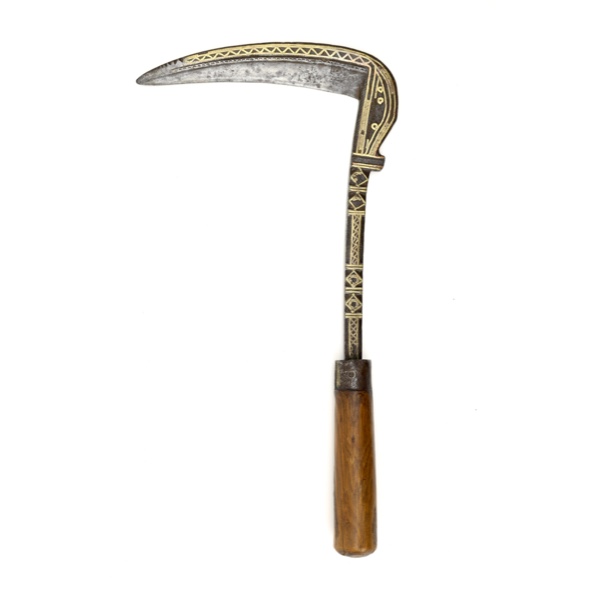
Afghan sickle, called lohar
Of typical design, forged from one piece of iron, overlaid with brass on one side.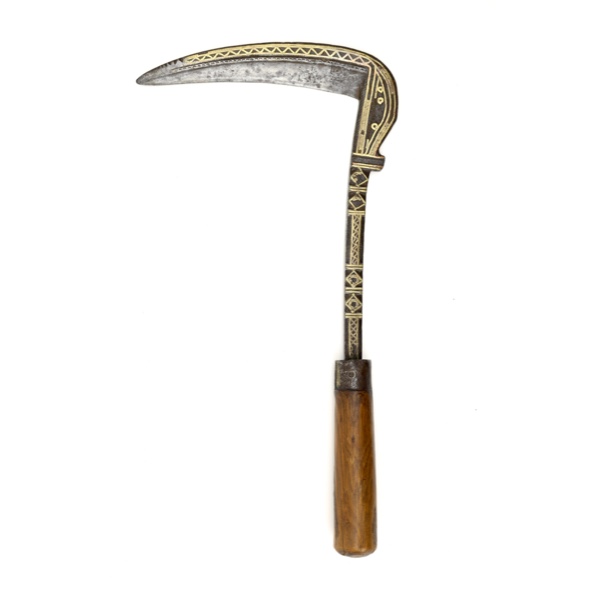
Lohar, Lor (لور), lawa-āor (لواور )
Pashto word for sickle.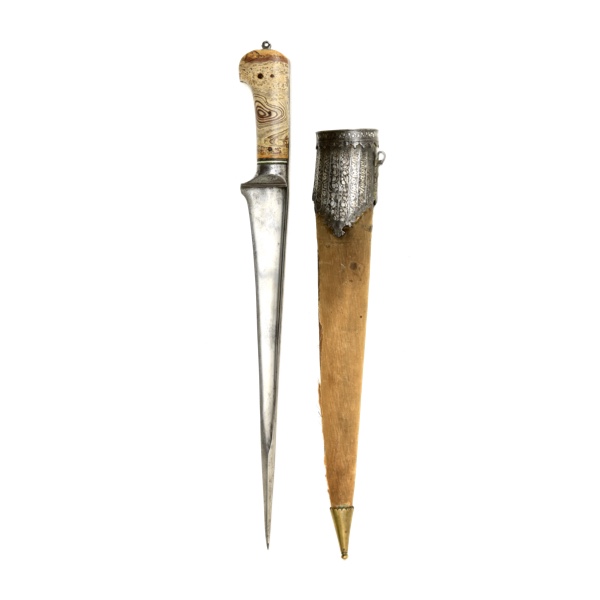
Stone-hilted pesh-kabz
A very large example with a strongly reinforced tip and stone handle scales.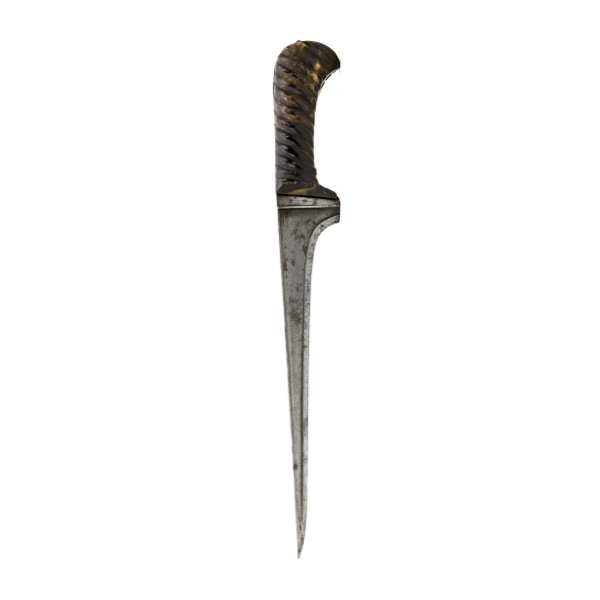
Pesh-kabz (پیش قبض)
Widely used Persian word for a type of dagger.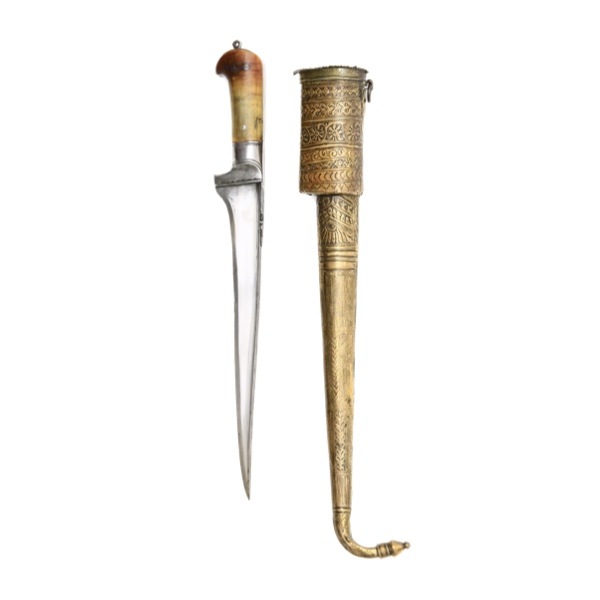
Pashtun dagger
With blonde horn grip scales and brass plated scabbard.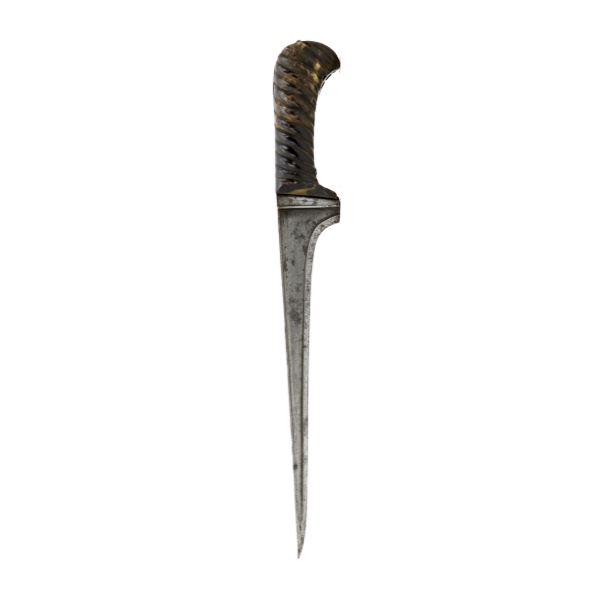
Pesh kabz with horn plated hilt
An excellently designed thrusting dagger with T-spine and sharp tip.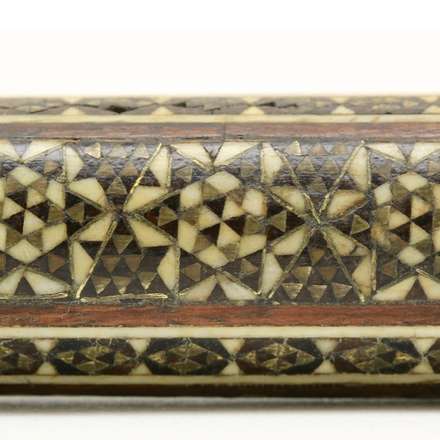
Khātam
Persian word for a type of marquetry work.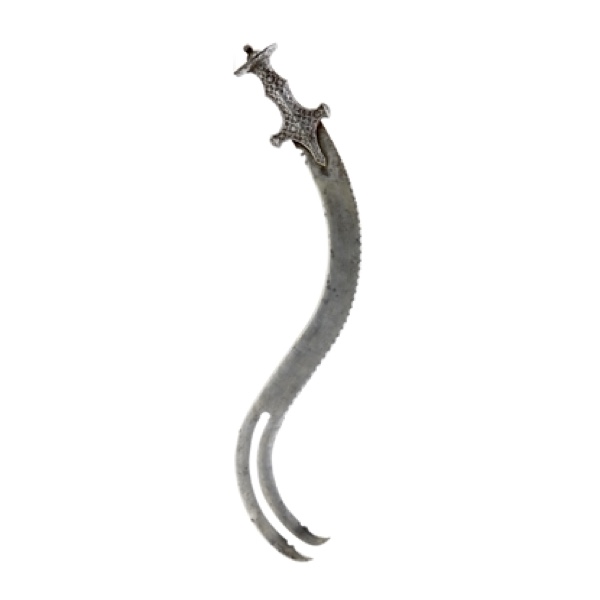
Unusual Indian zulfiqar sword
With bifurcated S-shaped blade in talwar hilt.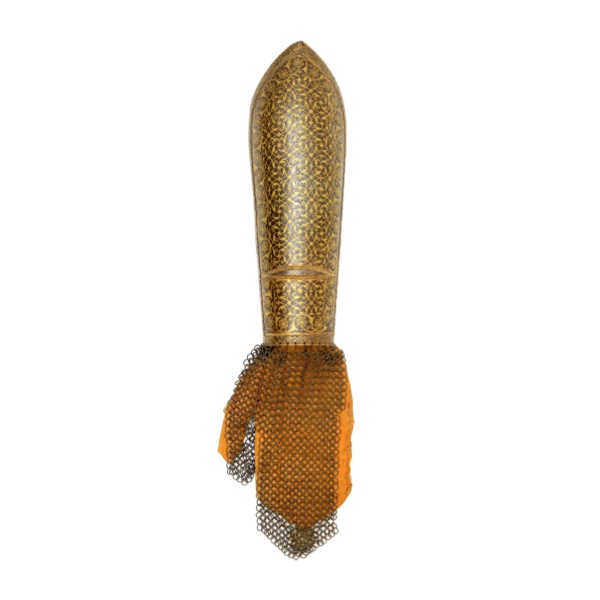
Dastānā (दस्ताने)
Hindi word for a type of arm protection.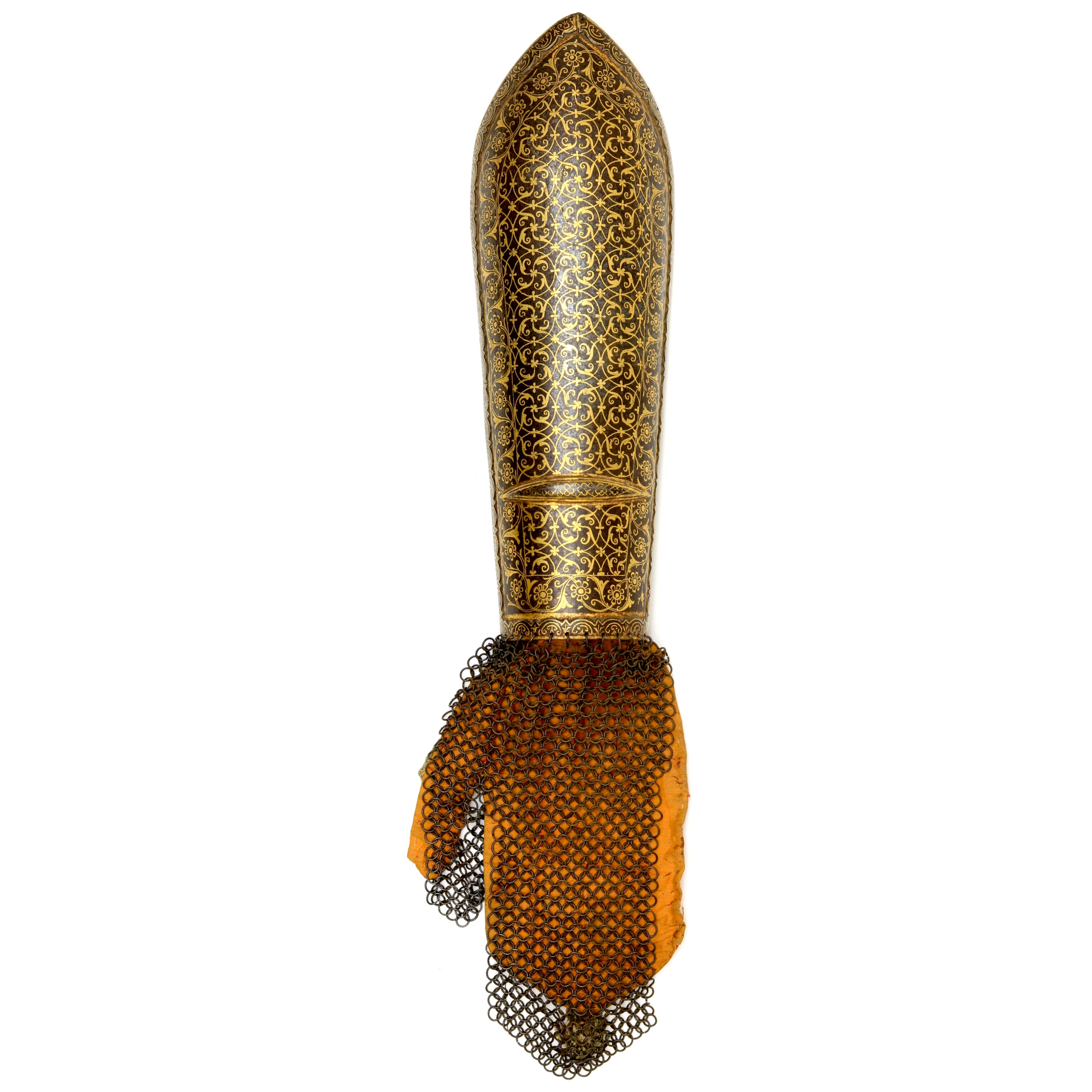
Bāzuband (بازوبند)
Persian word for a piece of lower arm protection.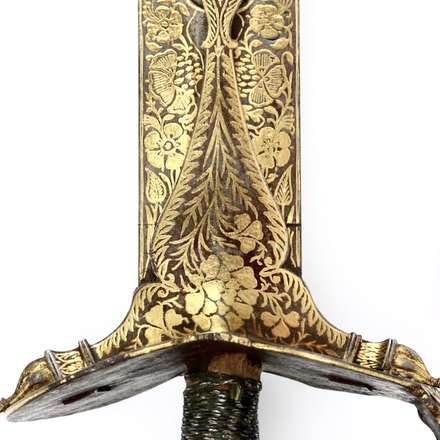
Koftgarī (کوفت گری)
Persian word for inlay or overlay of precious metal on iron or steel.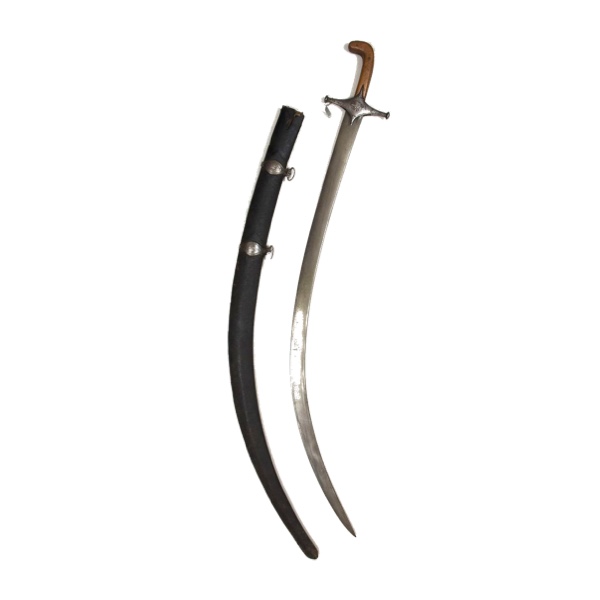
Shamshir (شمشیر)
Persian word for a deeply curved sword with narrow blade.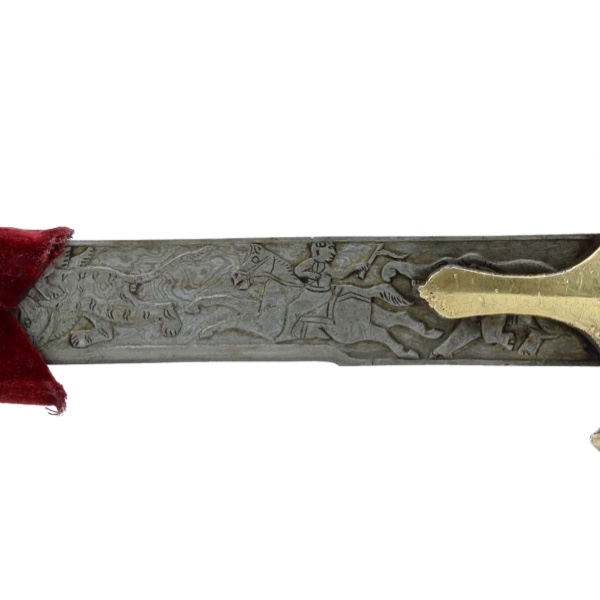
Shikārgar
Word used for an Indian sword with hunting scenes.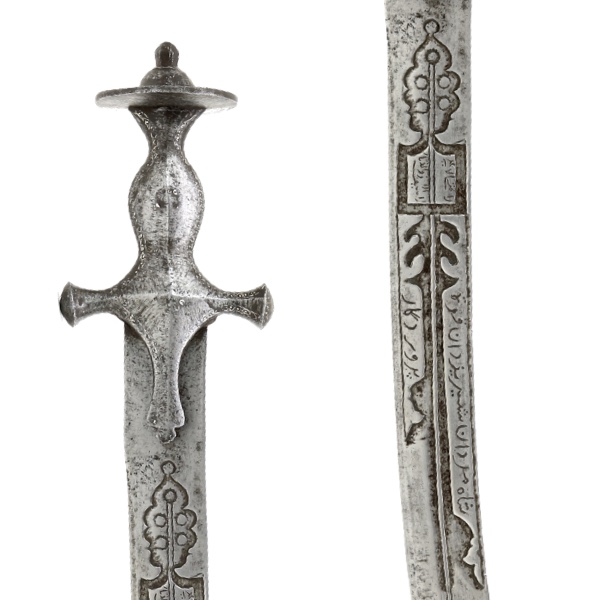
Talwar with Mamluk style blade
In Punjabi style hilt, with elaborately chiseled blade.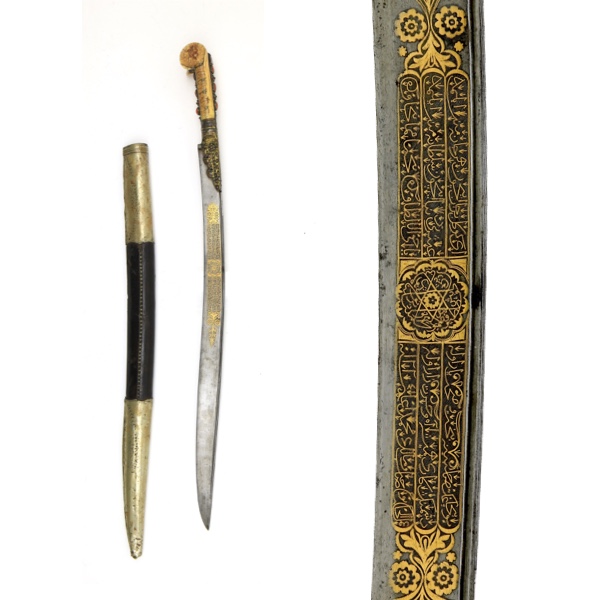
Fine Ottoman yatağan dated 1809
Made by a maker called Noah in 1809 for a certain Mehemmed Ağa Fî. With beautiful golden overlays on blade.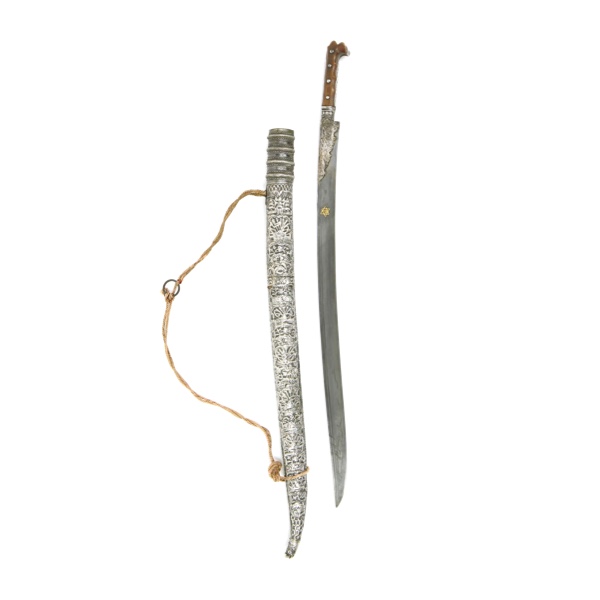
Yatağan
A type of Ottoman sword with a distinct eared hilt and recurved blade.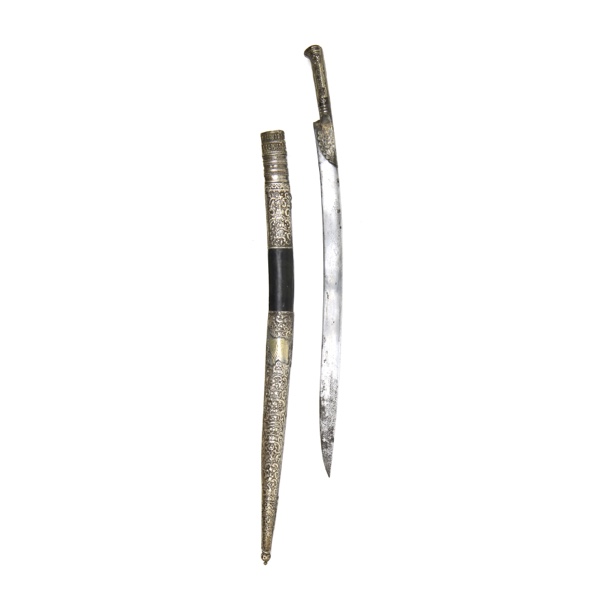
Yatağan dated 1790-1791
An old warhorse with several repairs.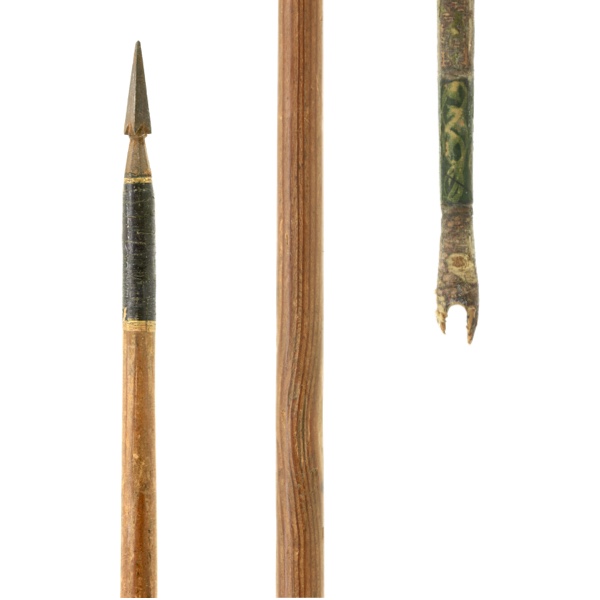
Rare Ottoman war arrow
With a small, barbed armor-piercing point and early style painted shaft.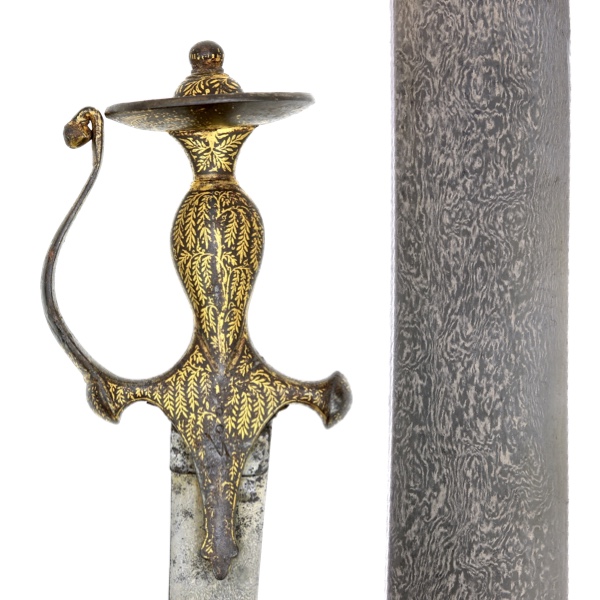
Lahore talwar hilted shamshir
Persian wootz shamshir in a talwar hilt from Lahore.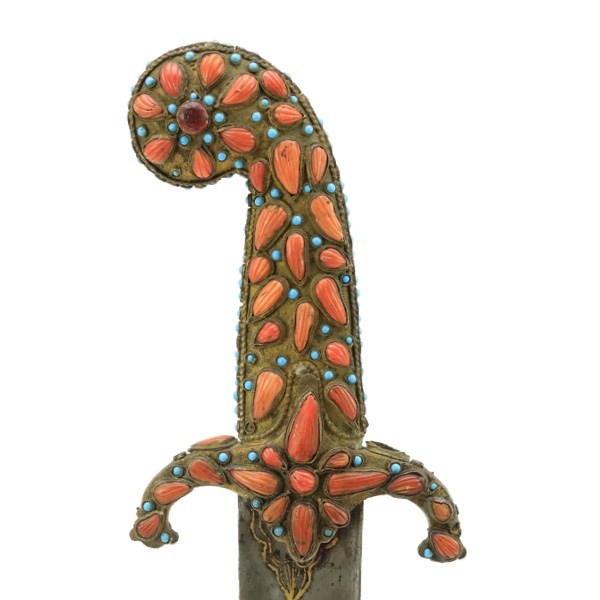
An Ottoman coral studded pala
With gilt copper scabbard and multi-row twist-core blade.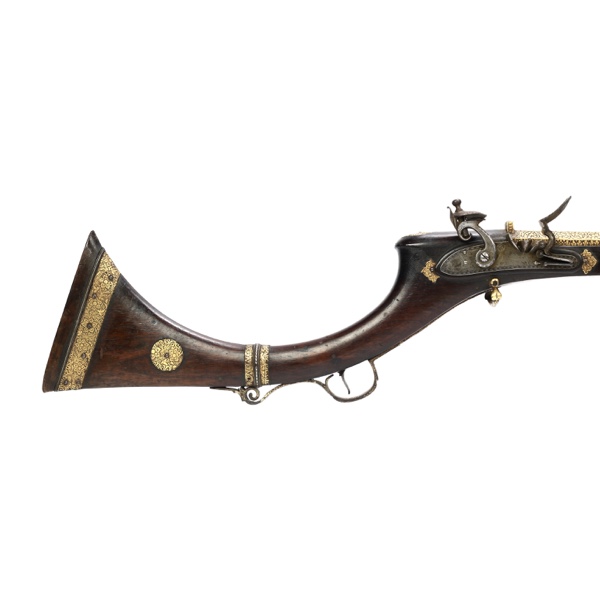
A fine Sindh flintlock
A large gun with English flintlock mechanism, as favored by the Mirs of the Talpur court. In very good condition, with almost all the gold remaining.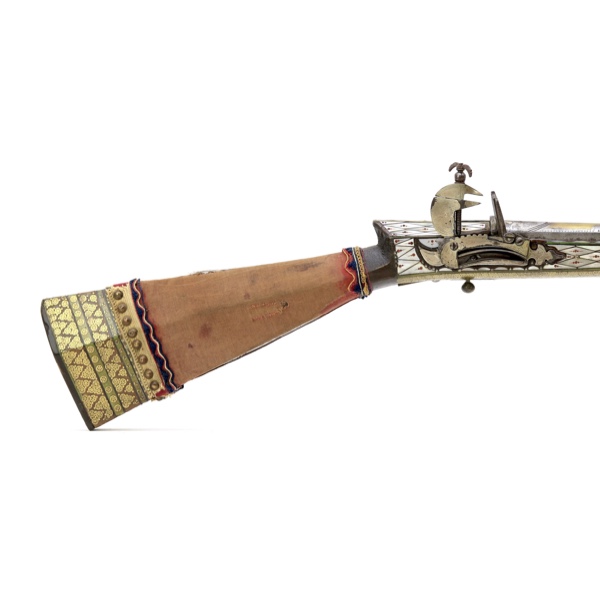
A fine "boyliya" paragun
One of Europe's rarest gun types. A fine example, with mother of pearl inlaid stock.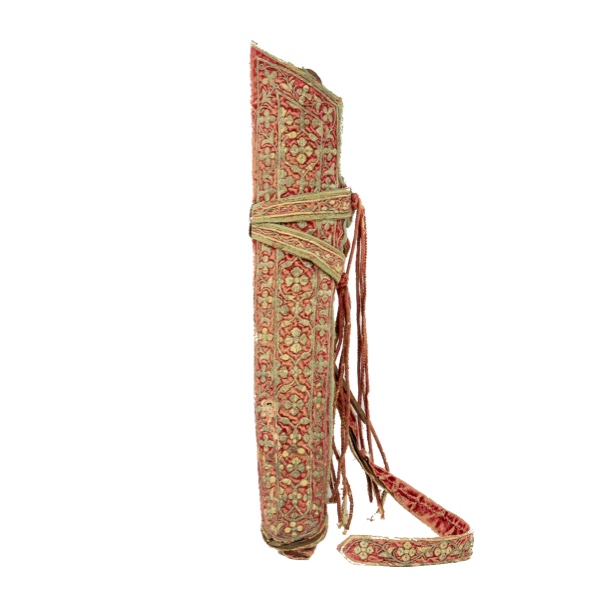
Tarkash (ترکش )
Persian word for quiver, also used in North India.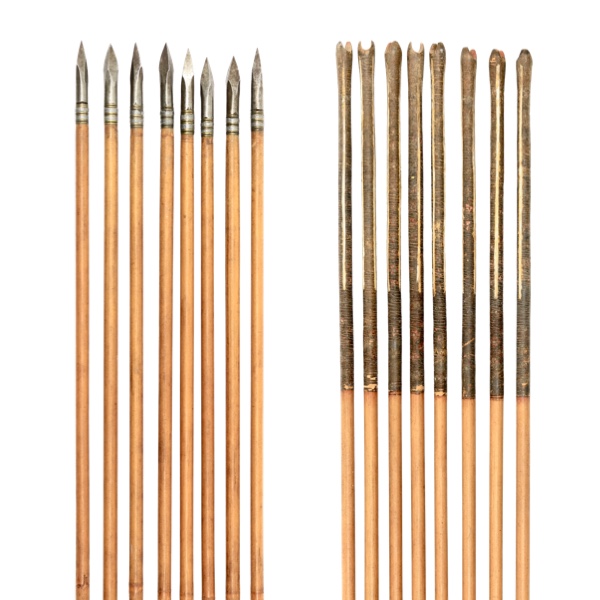
Tīr (तीर)
Hindi loan word from Persian for "arrow" or "arrows".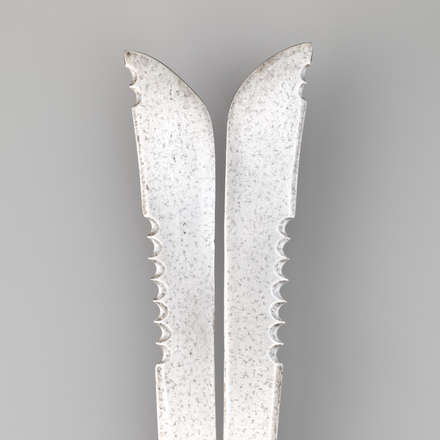
Dhu alfaqar (ذو الفقار)
An Islamic legendary sword.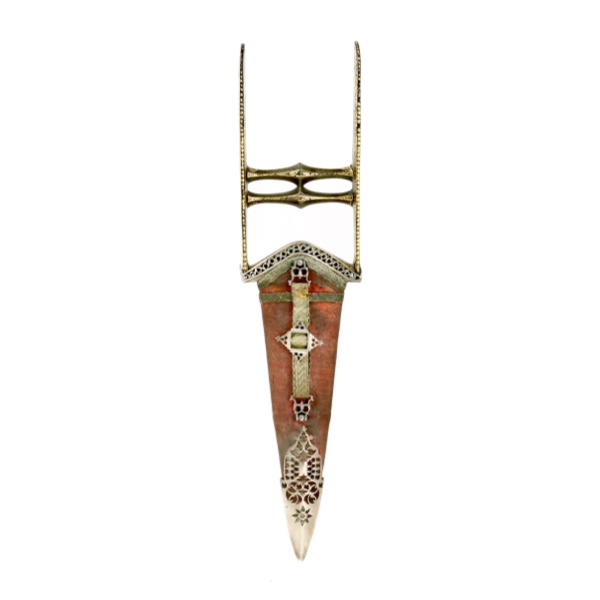
A katar from Sindh
With markings suggesting it was a wedding gift, presented in 1832.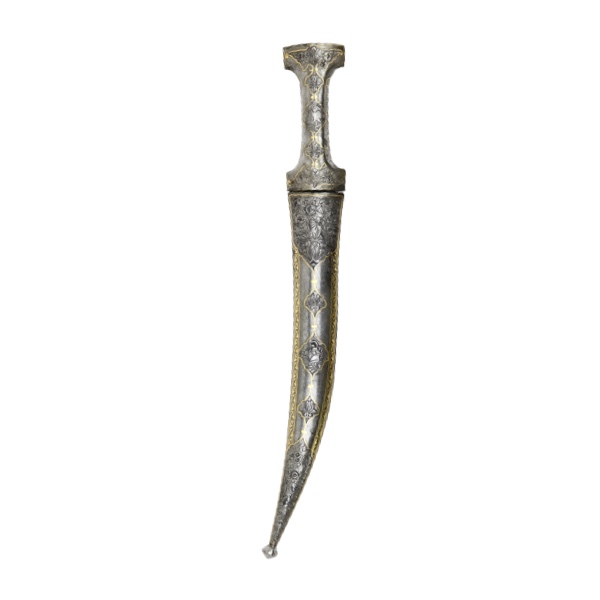
Khanjar (خنجر)
Persian word for dagger.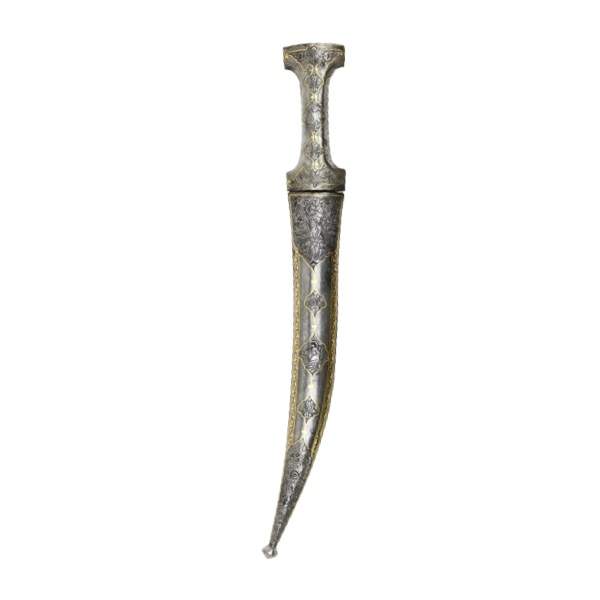
Persian "khanjar" dagger
With finely chiseled steel hilt and scabbard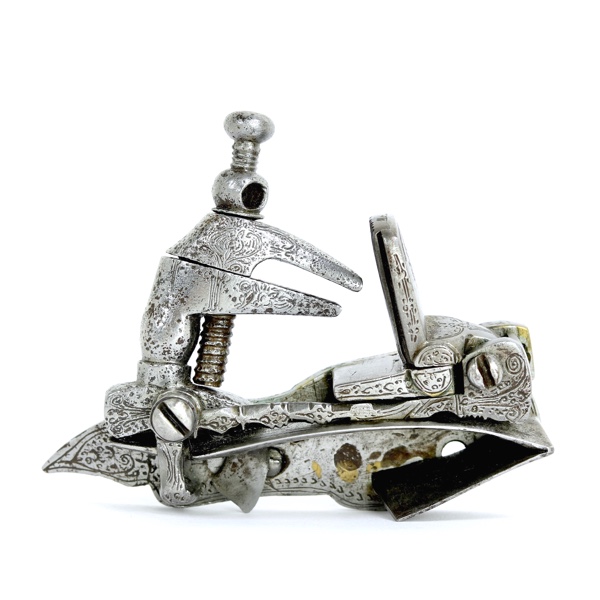
Miquelet
Collector's jargon for a type of lock for a firearm